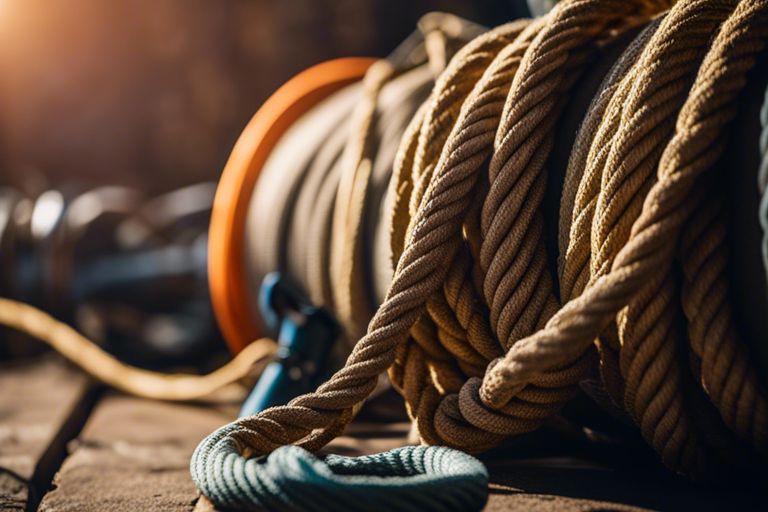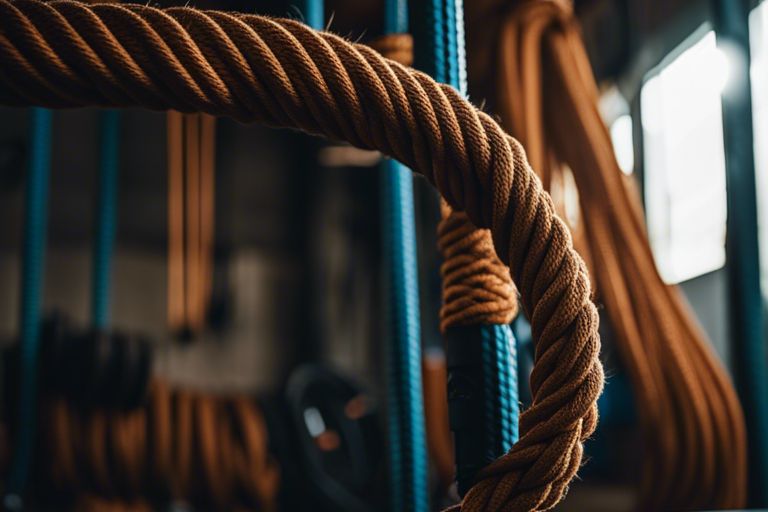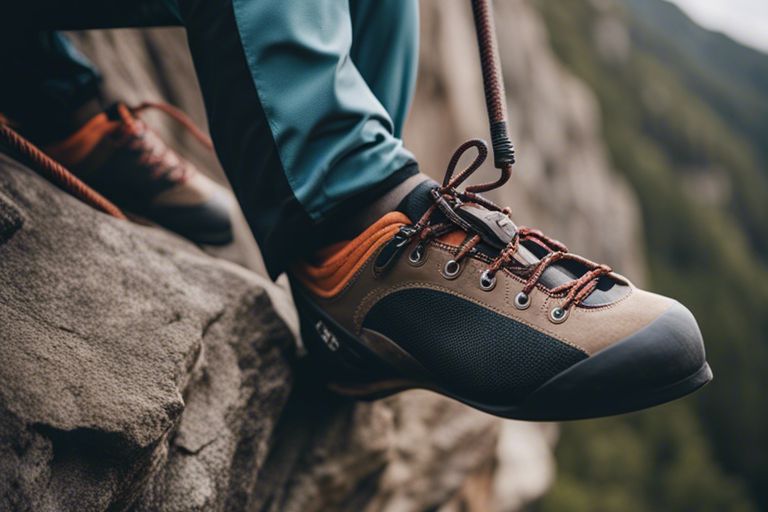Coil your climbing rope properly to ensure its longevity and safety. Proper storage of your climbing rope is vital to prevent damage and ensure its readiness for your next adventure. Follow these simple steps to store your climbing rope correctly and make sure it is always in top condition.
Key Takeaways:
- Avoid direct sunlight: Store your climbing rope away from direct sunlight to prevent UV damage.
- Keep it dry: Make sure your climbing rope is completely dry before storing it to prevent mildew or mold growth.
- Coil it properly: Store your climbing rope in loose, coiled loops to prevent kinks and twists.
Understanding the Importance of Proper Rope Storage
While climbing ropes are designed to be durable and strong, improper storage can significantly reduce their lifespan. By understanding the importance of proper rope storage, you can ensure that your climbing rope remains in top condition for longer.
Preventing Damage and Wear
There’s nothing worse than discovering your climbing rope has frayed or worn spots due to improper storage. By coiling your rope neatly and storing it in a cool, dry place away from direct sunlight and chemicals, you can prevent unnecessary damage and wear. Make sure to also avoid sharp edges or objects that could cut or abrade the rope.
Maintaining Performance and Safety
Maintaining your climbing rope properly not only prevents damage but also ensures its performance and safety. There’s no room for compromise when it comes to safety in climbing, so it’s crucial to inspect your rope regularly for any signs of wear or damage. By storing your rope correctly and conducting regular inspections, you can have peace of mind knowing that your equipment is in good condition for your next climb.
Performance and safety in climbing are directly linked to the condition of your equipment, including your climbing rope. By properly storing and maintaining your rope, you can trust in its performance and rely on it to keep you safe during your climbs.
Factors to Consider When Storing a Climbing Rope
Assuming you want to keep your climbing rope in good condition for as long as possible, there are several factors you need to consider when storing it. These factors include environmental conditions, rope material and construction, and storage space and accessibility.
Environmental Conditions
- Keep your climbing rope away from direct sunlight, heat sources, and chemicals, as these can weaken the rope fibers over time.
- Store your rope in a cool, dry place to prevent mold and mildew growth, which can compromise the strength of the rope.
Now, the key to preserving the lifespan of your climbing rope is to store it in optimal environmental conditions. Avoid storing your rope in places that are prone to extreme temperatures, humidity, or exposure to harsh chemicals. The longevity of your rope depends on how well you protect it from these factors.
Rope Material and Construction
Storing your climbing rope properly is important to maintaining its integrity and safety. Concerning rope material and construction, different types of ropes have varying levels of durability and stretch. Thicker ropes are generally more durable, while thinner ropes offer more flexibility and lighter weight.
Storage Space and Accessibility
- Choose a storage space that is free from sharp objects that could damage the rope, such as tools or hardware.
- Ensure easy access to your climbing rope so that you can inspect it regularly for signs of wear and tear.
Conditions surrounding the storage of your climbing rope can impact its overall longevity and safety. Make sure your storage space is clean, organized, and free from any potential hazards that could compromise the integrity of the rope. Additionally, easy accessibility to your rope allows you to inspect it regularly and address any issues promptly.

Choosing the Right Storage Method
Now, when it comes to storing your climbing rope, there are a few different methods you can choose from. One of the main decisions you’ll have to make is whether to coil or fold your rope for storage. Each method has its own pros and cons, which we’ll break down for you below.
Coiling vs. Folding: Pros and Cons
| Coiling | Folding |
|---|---|
| Helps prevent kinks and tangles | Can save space |
| Reduces wear and tear on the rope | Easier to transport |
| Allows for easier handling | Can cause permanent creases in the rope |
| Less likely to introduce twists in the rope | May lead to twists and tangles |
Using Rope Bags and Containers
Right, using rope bags or containers can be a great way to store your climbing rope. These specialized bags are designed to protect your rope from dirt, moisture, and UV rays, helping to extend its lifespan. They also make it easy to transport your rope to and from the crag, keeping it neatly contained and tangle-free.
It’s important to choose a rope bag that is the right size for your rope, as a bag that is too small can cause unnecessary kinks and twists. Look for a bag with a tarp or built-in ground cloth that you can use to flake out your rope before climbing. This will help keep your rope clean and prevent it from picking up dirt and debris.
Tips for Coiling a Climbing Rope
Not coiling your climbing rope properly can lead to tangles, twists, and kinks that can be time-consuming to undo. To ensure your rope stays in good condition and is ready for your next climb, follow these tips for coiling your climbing rope correctly.
The Correct Coiling Technique
Coiling your climbing rope properly starts with finding a clean, flat surface to lay out the rope. Begin by holding one end of the rope in your hand and then extending your arm completely to measure the halfway point of the rope. Next, form a large loop with the halfway point and the end in your hand. Continue making loops in the same direction until you reach the end of the rope. This technique is known as the butterfly coil, and it helps prevent tangles and twists in your rope.
Managing Rope Ends and Tails
Climbing ropes have two ends – the working end and the tail end. The working end is the side of the rope you climb on, while the tail end is the opposite side that often gets forgotten. Managing both ends properly can help prolong the life of your rope and prevent accidents. After coiling your rope, make sure to tie a simple overhand knot with the two ends to secure the coil and prevent it from unraveling.
Tips: Always leave a little extra tail when tying off the ends of the rope to avoid the knot slipping out. By doing so, you can ensure that your rope remains neatly coiled and ready for your next adventure.
Avoiding Kinks and Tangles
Correctly coiling your climbing rope is vital for avoiding kinks and tangles that can weaken the rope over time. When you hastily stuff your rope into a bag or toss it aside without coiling it properly, you risk damaging the fibers and creating knots that can compromise its integrity. Taking the time to coil your rope using the butterfly coil method can help maintain the quality and lifespan of your climbing rope.
Rope: By properly storing your rope with the correct coiling technique, you can avoid kinks and tangles that can make your rope challenging to manage during your climbs. Keep your rope coils neat and organized to ensure a smooth climbing experience every time.
How to Store a Climbing Rope in a Rope Bag
Selecting the Right Bag Size and Material
Many climbers opt to store their climbing ropes in a rope bag to keep them organized and protected. When choosing a rope bag, consider the size and material that will best suit your needs. The size of the bag will depend on the length of your rope, with most bags accommodating ropes up to 70 meters. Choose a durable material like nylon or canvas to ensure that your bag can withstand the rigors of outdoor climbing.
Packing the Rope Efficiently
Material
When packing your climbing rope into a rope bag, ensure that it is coiled neatly to prevent tangling. Start by flaking the rope on the ground in a straight line and then coil it into loops, making sure to avoid crossing the rope over itself. This will not only help prevent knots and tangles but also make it easier to feed the rope out when you’re ready to climb.
Rope
When packing the rope into the bag, make sure to feed it in smoothly without any twists or kinks. Ensure that the rope is evenly distributed within the bag to prevent lumps or bulges that could cause unnecessary wear and tear. By packing your rope efficiently, you’ll not only prolong its lifespan but also save time when setting up for your next climb.
Securing the Bag and Preventing Damage
Rope
Once your rope is securely packed in the bag, close the drawstring or zipper tightly to prevent the rope from spilling out. Some rope bags come with built-in straps or handles for easy carrying to and from the crag. Avoid dragging your bag on the ground or exposing it to sharp objects that could cause abrasions or cuts. By securing your rope bag properly, you’ll protect your rope and extend its longevity.
Securing
For added protection, consider storing your rope bag in a cool, dry place away from direct sunlight and moisture. Inspect your rope regularly for any signs of wear or damage, and replace it if necessary to ensure your safety while climbing. By maintaining proper storage practices, you’ll keep your climbing rope in top condition for many adventures to come.

Additional Tips for Long-Term Rope Storage
Your climbing rope is a critical piece of equipment that needs proper care for long-term storage. To ensure your rope remains in top condition, consider the following additional tips:
Cleaning and Conditioning the Rope
Rope cleanliness is necessary for maintaining its integrity. Before storing your climbing rope for an extended period, make sure to thoroughly clean and dry it. Use a mild detergent and lukewarm water to gently wash the rope, avoiding any harsh chemicals that could damage the fibers.
Once cleaned, allow the rope to air-dry completely in a cool, shaded area. Avoid exposing it to direct sunlight or heat sources, as this can weaken the rope material. Additionally, consider applying a rope conditioner to keep the fibers supple and prevent drying out during storage.
- Ensure the rope is completely dry before storing it.
- Use a rope bag or a dry, well-ventilated storage container to protect the rope from dirt and moisture.
The overall lifespan of your climbing rope can be extended through regular cleaning and conditioning.
Protecting Against Pests and Rodents
Additional measures can be taken to safeguard your rope against potential damage from pests and rodents during storage. Store your rope in a sealed container or a rodent-proof bag to prevent any unwelcome visitors from chewing or nesting in the rope material.
Rotating and Inspecting the Rope
Rope rotation is a good practice to prevent any sections from becoming overused or worn out. By periodically rotating the coil or loops of your stored rope, you distribute the wear more evenly, extending its overall lifespan.
Regularly inspect your climbing rope for any signs of damage, such as cuts, abrasions, or fraying. If you notice any issues, consider retiring the rope to ensure your safety during future climbs.
Cleaning and inspecting your rope regularly will help you identify any issues before they become a safety concern.
Summing up
Now that you know the best practices for storing a climbing rope, you can ensure its longevity and maintain its safety for your climbing adventures. By keeping your rope clean, dry, out of direct sunlight, and away from chemicals or sharp objects, you can prolong its lifespan and trust in its reliability during your climbs. Remember to inspect your rope regularly for any signs of wear and tear and always store it in a cool, dry place to prevent any damage or degradation.
Q: How should I store my climbing rope?
A: It is best to store your climbing rope in a cool, dry place away from direct sunlight and extreme temperatures. Avoid storing it in tightly coiled loops or hanging it on a sharp edge or hook as this can cause damage to the rope.
Q: Should I wash my climbing rope before storing it?
A: It is a good idea to wash your climbing rope before storing it to remove dirt, grime, and oils that can degrade the rope over time. Use a mild detergent and lukewarm water to hand wash the rope, then let it air dry completely before storing.
Q: How often should I inspect my stored climbing rope?
A: It is recommended to inspect your stored climbing rope regularly, at least every 3 months, for any signs of wear, damage, or fraying. Check for soft spots, cuts, abrasions, or changes in color as these can indicate that the rope needs to be replaced.




